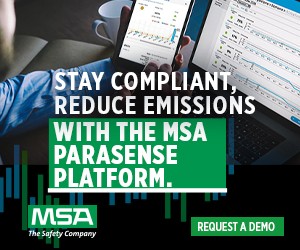A Preview of Upcoming Model Codes

IIAR’s overall objective with respect to model codes continues to be facilitating coordination between model codes, ASHRAE 15 and IIAR 2 with the intent of positively influencing model codes with respect to treatment of ammonia refrigeration. We have had much success in that regard, which I’ve documented in previous articles.
The rewrite of IIAR 2, along with IIAR’s new suite of standards that are focused exclusively ammonia refrigeration, has firmly established IIAR as the leading international standards development organization (SDO) representing the interest of the ammonia refrigeration industry. As a result, our focus on coordinating model codes with IIAR’s standards, and gaining formal adoption of these standards, has intensified. Getting IIAR’s standards recognized and adopted by model codes is an essential step towards having IIAR’s industry experts assume the primary role in establishing regulations that govern ammonia refrigeration.
With this in mind, a summary of our more significant accomplishments with the 2018 IMC and other model codes is presented below.
2018 IMC (pending final membership ratification):
Changed the definition of “Machinery Room” and associated provisions to clarify that spaces must only meet machinery room construction requirements when the machinery room is required by code. Accordingly, spaces that contain limited machinery that does not trigger a machinery room requirement, are clearly not required to be constructed as machinery rooms simply because some ammonia machinery happens to be present.
Changed machinery room door requirements to make it clear that only doors serving as a means of egress are required to swing outwards from the machinery room. Previous code text suggested that all doors leading out of a machinery room were required to swing out from the machinery room, even if they led to a control room, electrical room or other space that was not part of the intended egress path.
IIAR 3, IIAR 4 and IIAR 5 were adopted as official, enforceable reference standards. Added an allowance for “low-probability pumps” to be located outside of a machinery room in refrigerated industrial process and storage areas. This coordinates with provisions that were added to the 2014 edition of IIAR 2. Deleted an outdated provision that related to providing a minimum of 100 square feet of floor space per occupant in refrigerated industrial process and storage areas.
Added two new exceptions to the requirement to provide ammonia refrigerant leak detection in refrigerated industrial process and storage areas. The exceptions allow omission of leak detection where: 1) A space is unoccupied and contains only continuous piping that does not include valves, valve assemblies, equipment, or equipment connections, or 2) Approved alternatives are provided for rooms or areas that are always occupied, and for rooms or areas that have high humidity or other harsh environmental conditions that are incompatible with detection devices.
Eliminated vague restrictions on permissible locations of refrigerant piping in buildings. NFPA 1 Fire Code (pending further public comment and membership ratification):
IIAR 6 and IIAR 8 were recommended for adoption as official, enforceable reference standards.
Coordinated the requirements for refrigerant detection alarm and ventilation initiation with the new provisions in IIAR 2-2014, which are 25 ppm and 150 ppm, respectively.
UMC and IFC (processes begin January 2016) IIAR proposals to gain adoption of IIAR standards and coordinate requirements with IIAR 2-2014 will be processed.
National Electric Code (NEC): In addition to model fire, building and mechanical code advocacy, IIAR has also been advocating a change to the NEC that would eliminate a longstanding requirement to provide ventilation in refrigerated industrial process and storage areas where such areas are not designated as Class I, Division 2 hazardous (classified) locations. It is well understood and agreed by all that this requirement should apply to ammonia machinery rooms, but the NEC text, literally interpreted, extends this requirement to also include process and storage areas of refrigerated industrial facilities. Of course, providing emergency ventilation systems or Class I, Division 2 electrical equipment in these areas has never been industry practice, but the NEC text has presented a potential “gotcha” that is best eliminated. After two meetings with the committee that governs this portion of the NEC, IIAR has gained the committee’s support of a change that fixes this issue. The final vote on this change will be in June 2016 at NFPA’s annual conference.
Development of model codes and standards is an ongoing activity that involves many dedicated IIAR member volunteers serving on the IIAR Code Committee and IIAR Standards Committee. Individuals who serve on these committees as representatives of the membership help to identify and respond to issues of concern to the industry and play a key role in directing future changes, such as those described above, many or all of which can be expected to appear in upcoming editions of model codes.













